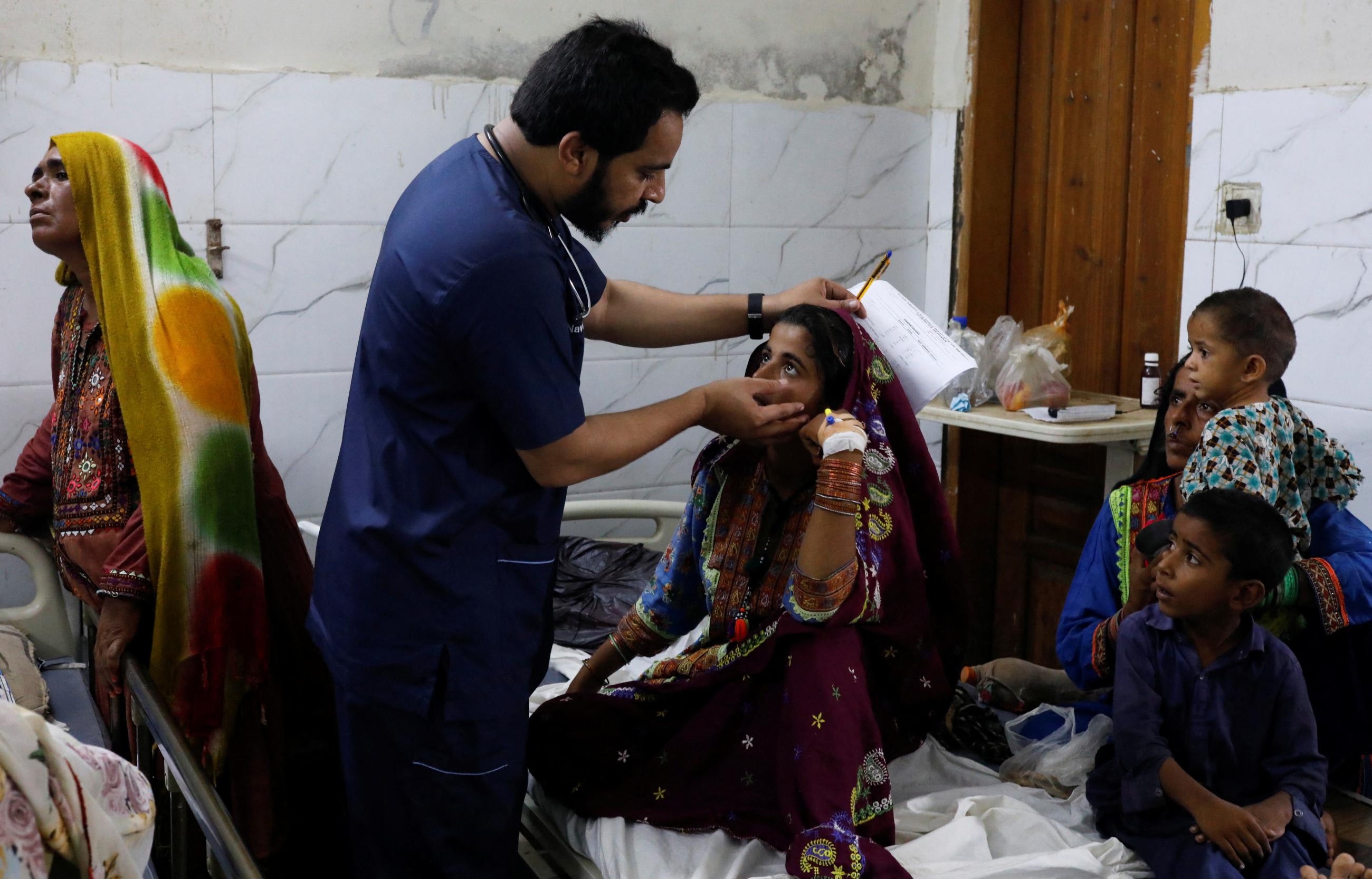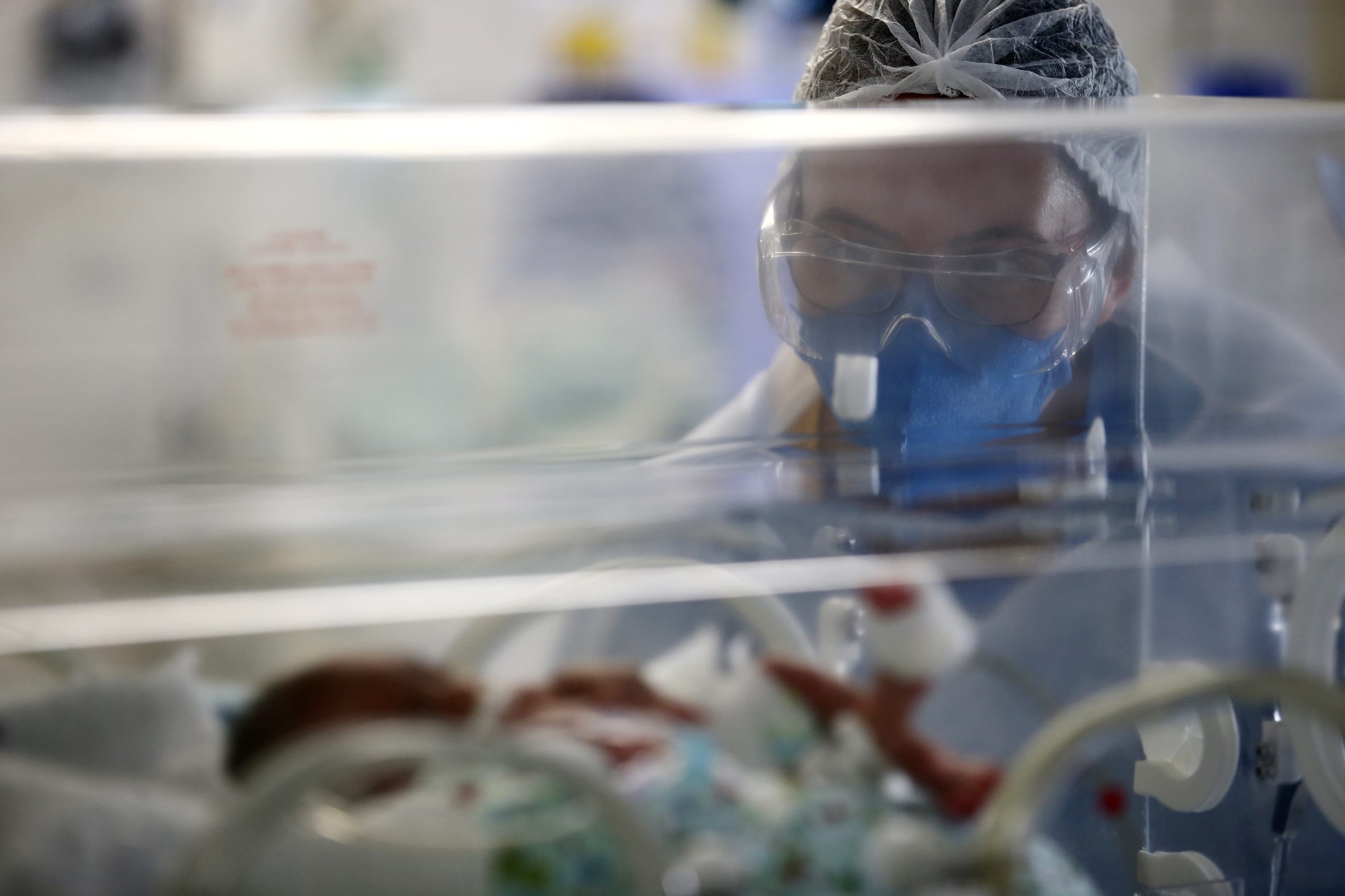The pandemic's toll has been terrible: almost eight million deaths have been reported globally since 2020, and the total number of COVID-19 deaths—which includes unreported deaths—adds up to an estimated 18.5 million. Meanwhile, there are still millions of new infections occurring every day around the world.
But COVID-19 has also been "disruptive" in the positive sense of the word. The idea of disruption being a good thing traces back to a 1995 Harvard Business Review paper on how unexpected technologies can supplant existing ones, creating new possibilities. The tragedy of COVID-19 has also led to a decline in air pollution and the fastest vaccine development in history.
Among other positive disruptions due to COVID-19 is a massive increase in development assistance for health (DAH); spending to fight COVID-19 led to the largest year-over-year increase in total DAH on record. Development assistance for health encompasses a range of programs and activities, from diagnosing conditions, to purchasing supplies (like mosquito bed nets), to treating disease. Many low- and lower-middle-income countries rely on DAH to maintain or improve health, and without DAH the historical burden of diseases like malaria and HIV/AIDS may well have been higher.
Overall Development Assistance for Health, 1990-2021
According to new research from the Institute for Health Metrics and Evaluation, in 2021, total DAH was an estimated $67.4 billion—an 8.6 percent increase over the 2020 total of $62.1 billion. That in turn, was an increase of 43.9 percent over the 2019 total. Much of the increase in total DAH is due to a jump in DAH for "other infectious diseases"—a category that includes COVID-19.
To put the COVID-19-driven rise in DAH in perspective, before the onset of the pandemic the largest single-year increase in total DAH was between 2007 and 2008, when it went up roughly $6 billion, from $25 billion to $31 billion; the increase was driven by an infusion of US bilateral aid, in part due to PEPFAR. And prior to the increase in DAH for other infectious diseases, the largest increase in spending for a single cause was for HIV/AIDS. Between 2009 and 2010, DAH for HIV/AIDS went up by nearly a quarter ($2.1 billion).
Development Assistance for HIV/AIDS vs. HIV/AIDS Deaths, 1990–2019
Annual HIV Deaths per 100,000
A Rising Tide of Spending
In addition to DAH for COVID-19, development assistance for health for other health areas also increased during the "COVID period" (2019-2021). Spending to support child and newborn health, HIV/AIDS, and health systems strengthening all rose during this timeframe. Though far smaller than the increase in COVID-19 funding, the growth in investments for other health issues can reap benefits. Spending to support health systems, for example, can lead to stronger health institutions, which in turn, can have long-lasting impact. And investments in child and newborn health have never been higher than in 2021, which boasted a total of $9.5 billion, an increase of 10.3 percent over 2020.
Development Assistance for Health for Select Health Areas, 1990–2019
Correspondingly, a number of donors—including Germany (+53.8 percent between 2019 and 2021), and Japan (+57.4 percent)—increased their development spending during the COVID period. And additional funds were disbursed by important channels of development spending like the Global Fund, which disbursed 68.6 percent more DAH between 2019 and 2021.
Though it remains too early to assess the precise impact of the DAH increases (for COVID and otherwise) during the pandemic era, it stands to reasons that without this spending the effect of COVID-19 could have been much higher. Likewise, the increases in DAH for other health areas beyond COVID-19 may well decrease the burden of those conditions.
The Future of Development Assistance for Health
The challenge now is to maintain the momentum in development assistance: to lessen COVID-19's ongoing impact, to tackle other health challenges, and—last but definitely not least—to prepare for future pandemics. COVID-19 taught, or more accurately re-taught, the world several lessons, one of which was the importance of planning for the worst.
But planning for the worst—specifically funding for the worst—has historically not been one of the global community's strengths. For example, in 2018, just before the onset of COVID-19, DAH for pandemic preparedness was only a small portion of overall DAH, representing just 0.95 percent of total development assistance for health at an estimated $410 million. As much spending on COVID-19 as there has been, the pandemic's multi-trillion dollar economic impact far outweighs spending to combat it. To mitigate financial shocks like the one brought on by COVID-19, the G20 High Level Independent Panel on pandemic preparedness recommends that donors provide an estimated $15 billion annually over the next five years to support pandemic preparedness.
What's more, how investments in pandemic preparedness are made is critically important. The enormous increase in DAH observed during the COVID period inspires hope. But investing in more effective ways to protect against a range of diseases and conditions is just as important as defending the world against the next pandemic.
Another concern is that DAH didn't increase across all health areas during the COVID period; for example, development spending for maternal health declined. Fluctuations in spending—particularly downward fluctuations—can be challenging at any time, but especially so now, given the economic and political challenges facing the world.
In the second story in our series, to be published in late February 2023, pandemic preparedness spending will be examined in greater detail, as well as the difficulties associated with changes in funding, and the health areas that saw drops in spending during the COVID-19 period. On a more positive note, the next piece will also look at lessons learned from the massive mobilization of resources for the health-related response to COVID-19.
This article is the first in a two-part series based on new estimates.

ACKNOWLEDGMENTS: The authors would like to thank IHME's Brendan Lidral-Porter, Nishali Patel, and Juan Solorio for their help with the figures and estimates throughout.
EDITOR'S NOTE: The authors are employed by the University of Washington's Institute for Health Metrics and Evaluation (IHME), which leads the development assistance for health research described in this article. IHME collaborates with the Council on Foreign Relations on Think Global Health. All statements and views expressed in this article are solely those of the individual authors and are not necessarily shared by their institution.












